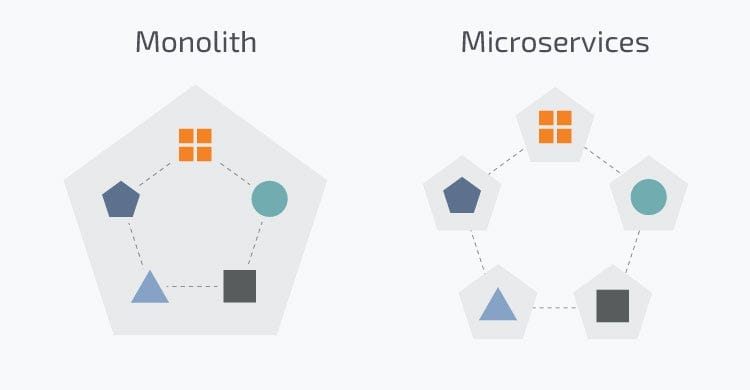Distributed Monoliths: Recognizing, Addressing, and Preventing
In software architecture, the quest for an efficient and effective system design has given rise to various approaches.

In software architecture, the quest for an efficient and effective system design has given rise to various approaches.
Among these, microservices architecture has gained significant popularity due to its ability to break down applications into smaller, independent services that can be developed, deployed, and scaled independently.
However, as with any technology, improper implementation can lead to unintended consequences.
One such consequence is the creation of a distributed monolith — a deceptive, dangerous, and hard-to-recognize software design that can harm your development process and final product.
What is a Distributed Monolith?
A distributed monolith is a system that outwardly resembles a microservices architecture but still has a high degree of coupling between its services, negating the advantages a true microservices design offers.
This tight coupling occurs when services are overly reliant on one another, reducing flexibility and maintainability and hampering the ability to scale or deploy individual services independently.
Causes of Distributed Monoliths
- Inadequate Boundaries: One of the core principles of microservices is to define clear boundaries between services based on domains or responsibilities. Failing to establish or maintain these boundaries can lead to a distributed monolith.
- Shared Data Models: When services share data models, any change to one service can impact other services, leading to tight coupling and reduced maintainability.
- Excessive Communication: Microservices should communicate efficiently and judiciously. When services are overly chatty or rely on synchronous communication, they can become tightly coupled and less scalable.
- Lack of API Versioning: Failing to properly version APIs can lead to compatibility issues and a breakdown of the ability to deploy and scale services independently.
Consequences of Distributed Monoliths
- Reduced Agility: The tight coupling between services can make it harder to change or refactor individual services, reducing the team's agility and overall development speed.
- Limited Scalability: Due to the increased dependencies between services, independently scaling one service becomes difficult, if possible.
- Poor Maintainability: The interwoven nature of distributed monoliths makes it challenging to identify and address issues within the system, leading to higher maintenance costs and slower resolution.
- Deployment Bottlenecks: As services cannot be deployed independently, updates to one service can cause delays in deploying other services.
Preventing Distributed Monoliths
- Enforce Service Boundaries: Identify and enforce clear boundaries between services based on business domains or responsibilities, ensuring each service has a single responsibility and minimizing coupling.
- Avoid Shared Data Models: Design services to own their data models and provide APIs for other services to access or modify the data when needed.
- Use Asynchronous Communication: Employ asynchronous communication patterns such as event-driven or message-based communication to reduce service dependency.
- Implement API Versioning: Properly version APIs to ensure backward compatibility and maintain the ability to deploy and scale services independently.
- Continuously Monitor and Evaluate: Regularly evaluate the system's architecture and design, identify areas where coupling may have crept in, and take corrective action.
Understanding the causes and consequences of distributed monoliths and implementing best practices to prevent them allow developers to continue to leverage the benefits of microservices architecture while avoiding the pitfalls associated with an improperly implemented design.
Happy coding!
Follow me on Medium, LinkedIn, and Twitter.
All the best,
Luis Soares
CTO | Head of Engineering | Cyber Security | Blockchain Engineer | NFT | Web3 | DeFi | Data Scientist
#monoliths #microservices #data #model #deployment #agility #scalability #software #architecture #data #design #patterns #application #softwaredevelopment #softwareengineering #backend #development #softwaredesign



